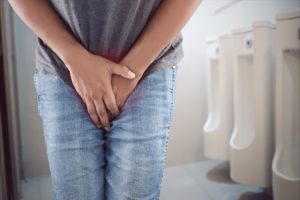 Sometimes when I’m in the middle of my daily walk, the urge to pee hits me like no tomorrow. Thankfully, I’m never too far from a restaurant or coffee shop I can use. But you might not be so lucky.
Sometimes when I’m in the middle of my daily walk, the urge to pee hits me like no tomorrow. Thankfully, I’m never too far from a restaurant or coffee shop I can use. But you might not be so lucky.
When the urge to go hits, it can lead to discomfort and embarrassment. It can create a fear of leaving the house, committing to outings with family and friends, and even going to the grocery store. But for many, it might be far easier to treat naturally than you might think.
Advertisement
There are three types of incontinence, stress incontinence, urge incontinence (aka overactive bladder), and overflow incontinence.
- Stress Incontinence: Most commonly occurs in women as a result of a weakened or stretched pelvic floor resulting from childbirth. The most obvious symptom of this form of incontinence is leakage from laughing or coughing. In men, it can occur with a removed prostate or injury to the area.
- Urge Incontinence: This is when you are hit with the immediate urge to go and cannot get to a bathroom fast enough. It can be caused by overactive contractions in the bladder muscle. In men, it may be a result of an enlarged prostate. In women, it may result from changes in the bladder lining or muscle.
- Overflow Incontinence: The bladder is not emptying properly, so there is nowhere for additional urine. It can lead to an increased risk for bladder infections, and generally affects men with enlarged prostates.
One natural way to deal with incontinence is called “time voiding.” This means setting a schedule for urination. Depending on your current frequency, set your schedule for something you think you can achieve. Stick to it, then try extending it by two minutes, five minutes, etc. Squeeze the muscles to hold the urine in, and in time, you can train yourself to control the urge.
Bladder guarding is another method for controlling incontinence. Some people have triggers that induce urination. Bladder guarding is a way of identifying those triggers—like hearing running water—and taking control of them. When you are faced with a trigger, squeeze and hold the muscles, sending the message to your brain that you don’t have to go. The theory is that in time, the association will change.
Some may benefit from rehabbing their pelvic floor. The muscles in this area play a large role in bladder control and strengthening them with Kegel exercises can help with incontinence.
You may be able to tame incontinence more quickly and easily than you think. Limit the stress of uncontrollable urination and boost the quality of your life.
Also read:
- Natural bladder supplements: 18 herbal remedies for overactive bladder
- 9 yoga poses to strengthen your bladder
- 8 reasons for your leaky bladder
